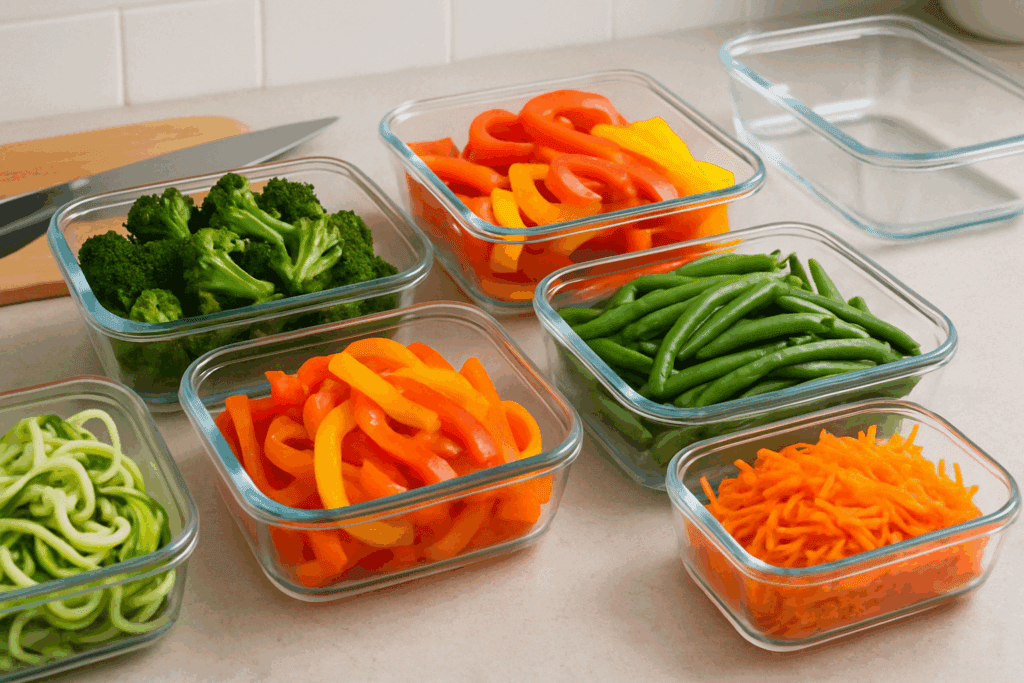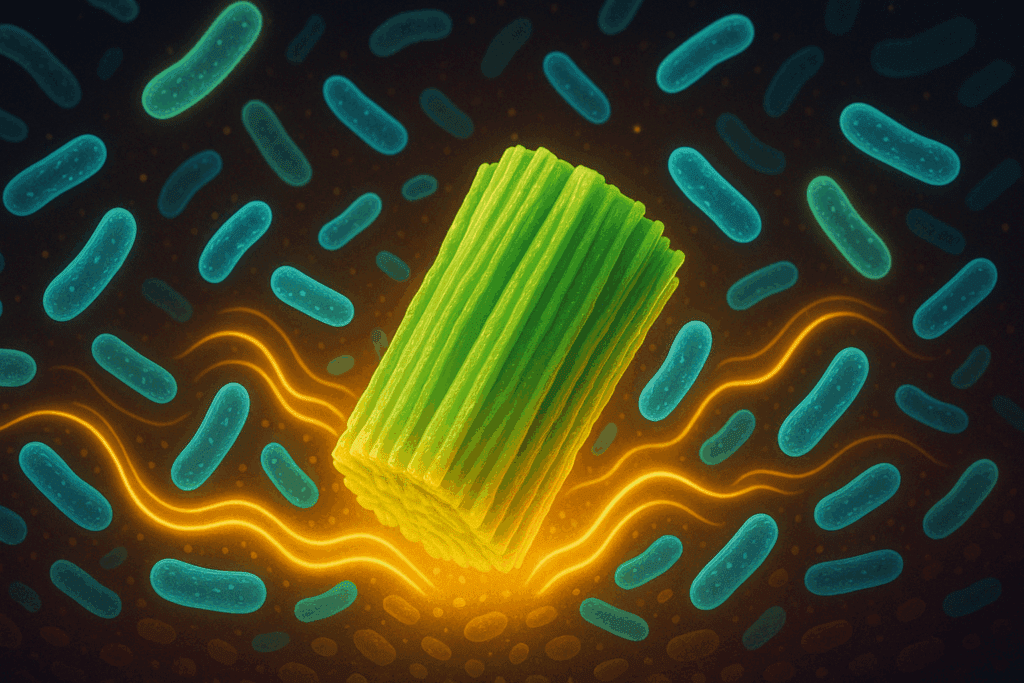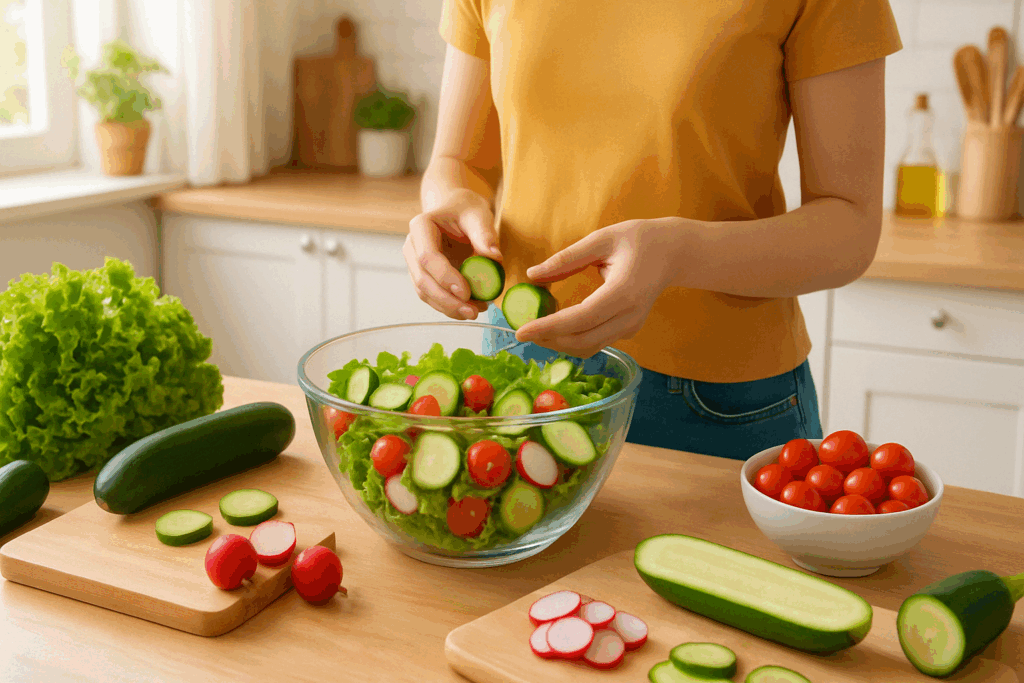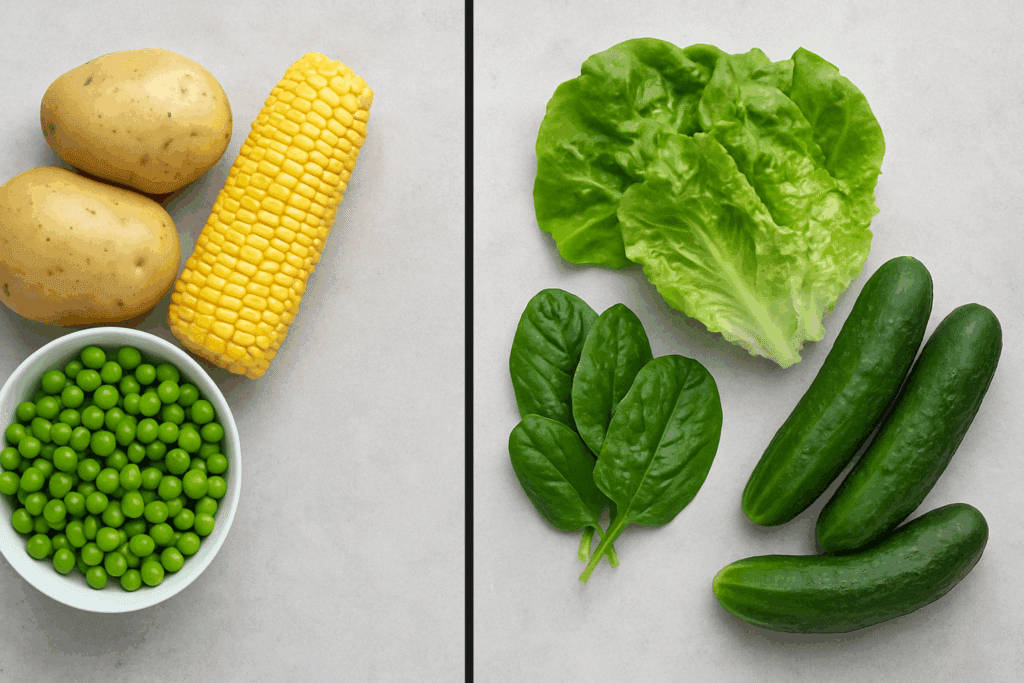When it comes to building a healthy, sustainable diet, few food groups offer as many nutritional advantages as vegetables. These colorful, diverse plant foods are low in calories, high in fiber, and densely packed with essential vitamins, minerals, antioxidants, and phytonutrients. For individuals pursuing whole-food, plant-based nutrition or simply aiming to reduce their caloric intake without compromising nutritional value, understanding how many calories are in vegetables is an empowering step toward informed eating.
You may also like Plant Based Diet vs Standard American Diet: What the Latest Studies Reveal About Long-Term Health Outcomes
At the intersection of health science and dietary strategy, the role of vegetables in weight management and chronic disease prevention has been extensively studied. Yet despite widespread recognition of their benefits, many people still wonder: how many calories are in vegetables, and how can this knowledge shape smarter food choices? This article explores that question in depth, combining nutritional science with practical guidance. Whether you’re interested in weight loss, plant-based eating, or optimizing your diet for longevity, the caloric content of vegetables offers key insights.
Understanding Caloric Density and Its Role in Nutrition
Before diving into the specific calorie counts of various vegetables, it’s helpful to understand the concept of caloric density. Caloric density refers to the number of calories present in a given weight or volume of food. Foods with low caloric density provide fewer calories per gram or per serving, which means you can consume more of them without significantly increasing your total caloric intake. Vegetables, especially non-starchy ones, exemplify this principle.
The low caloric density of most vegetables allows them to fill up space on your plate and in your stomach while contributing relatively few calories. This can support satiety, helping you feel full and satisfied even when consuming fewer total calories—a key benefit for those aiming to lose or maintain weight. Additionally, because vegetables contain high amounts of water and fiber, they not only add bulk to meals but also aid digestion and stabilize blood sugar levels.
When people ask how many calories are in veg or how many calories are in vegetables overall, they are often seeking reassurance that increasing vegetable intake won’t derail their dietary goals. The good news is that with very few exceptions, vegetables are an ideal choice for health-conscious eaters precisely because of their low energy density and high nutrient yield.

Why Some Vegetables Have More Calories Than Others
While the caloric range among vegetables is generally narrow, there are still notable differences depending on the type. Leafy greens like spinach, kale, and romaine lettuce are extremely low in calories, with just 5 to 15 calories per cup when raw. On the other end of the spectrum, starchy vegetables like potatoes, corn, and peas contain more calories due to their higher carbohydrate content.
This variation does not make high-calorie vegetables inherently unhealthy. On the contrary, many starchy vegetables are nutrient-dense, providing fiber, potassium, vitamin C, and complex carbohydrates that fuel the body. However, understanding which vegetables are higher in calories can help with portion control and meal planning, especially for those following specific caloric targets.
The way a vegetable is prepared can also influence its caloric impact. Boiled or steamed vegetables maintain a low calorie count, but once oil, butter, or heavy sauces are introduced, the calorie content rises significantly. For example, roasted carrots with olive oil will have more calories than raw or steamed carrots. Thus, cooking methods play a critical role in determining the overall caloric contribution of vegetables to your diet.
Breaking Down Calorie Counts by Vegetable Type
Let’s take a closer look at the calorie counts of specific vegetables, categorized by type. These values are approximations based on standard serving sizes and can vary slightly depending on variety and preparation.
Leafy Greens: Spinach: Approximately 7 calories per cup (raw) Kale: Around 33 calories per cup (raw) Romaine Lettuce: Roughly 8 calories per cup (shredded, raw) Swiss Chard: About 35 calories per cup (cooked)
Cruciferous Vegetables: Broccoli: Approximately 55 calories per cup (cooked) Cauliflower: About 25 calories per cup (chopped, raw) Brussels Sprouts: Roughly 38 calories per cup (cooked) Cabbage: Around 22 calories per cup (shredded, raw)
Root Vegetables: Carrots: Approximately 50 calories per cup (sliced, raw) Beets: About 59 calories per cup (boiled) Turnips: Around 36 calories per cup (cooked) Radishes: Roughly 18 calories per cup (sliced, raw)
Starchy Vegetables: White Potatoes: Around 130 calories per medium potato (baked, with skin) Sweet Potatoes: Approximately 112 calories per medium potato (baked, with skin) Corn: About 132 calories per cup (cooked kernels) Green Peas: Roughly 118 calories per cup (cooked)
Other Common Vegetables: Tomatoes: Approximately 22 calories per medium tomato Zucchini: Around 19 calories per cup (sliced, raw) Bell Peppers: Roughly 30 calories per cup (sliced, raw) Cucumbers: About 16 calories per cup (sliced, raw, with peel)
These numbers highlight the diversity of caloric profiles among vegetables, and while some may be higher in calories than others, all offer health benefits when consumed in appropriate quantities as part of a balanced diet.

Low-Calorie Vegetables for Weight Management
For individuals focusing on weight loss or caloric control, low-calorie vegetables are an invaluable dietary tool. Eating large portions of vegetables like lettuce, celery, cucumbers, zucchini, and radishes can help increase food volume while minimizing caloric intake. This volumetric approach to eating allows individuals to consume satisfying meals without surpassing their daily energy needs.
Furthermore, these low-calorie options are often rich in fiber, which plays a critical role in regulating appetite. Fiber slows gastric emptying and helps maintain stable blood sugar levels, reducing the likelihood of cravings and overeating. Incorporating a variety of low-calorie vegetables into every meal can support a sustainable weight loss journey without the feelings of deprivation that often accompany restrictive diets.
Understanding how many calories are in veg can empower people to craft meal plans that are both satiating and nutritionally dense. For example, starting a meal with a large salad of leafy greens, cucumbers, and tomatoes can reduce overall calorie consumption by increasing fullness early on. Similarly, replacing refined carbohydrates with spiralized zucchini or cauliflower rice can create satisfying meals with fewer calories.
How Vegetables Support Metabolism and Satiety
The benefits of vegetables extend beyond calorie count. Research shows that plant-based foods rich in fiber and phytonutrients can positively influence metabolism, digestive health, and hormone regulation. These physiological effects contribute to the body’s ability to efficiently utilize energy, regulate hunger signals, and maintain a healthy weight.
One of the most overlooked aspects of vegetable consumption is its impact on gut health. The human gut microbiome thrives on the prebiotic fibers found in many vegetables. A well-nourished gut microbiota enhances metabolic efficiency, improves nutrient absorption, and even supports immune function. This symbiotic relationship between vegetable intake and gut health underscores the broader implications of choosing vegetables not only for calorie control but for long-term metabolic well-being.
Additionally, vegetables help regulate appetite through the complex interaction of nutrients and hormones such as leptin and ghrelin. These hormones play a role in signaling hunger and satiety, and their activity is influenced by diet composition. A diet rich in low-calorie vegetables promotes a hormonal balance conducive to sustained fullness and controlled eating behavior, making it easier to maintain a healthy weight over time.

The Role of Vegetables in Plant-Based and Whole-Food Diets
For individuals following a whole-food, plant-based diet, vegetables are the cornerstone of daily nutrition. They not only offer vital micronutrients but also serve as the primary source of antioxidants and disease-fighting compounds. Whether eaten raw, steamed, roasted, or blended into soups and smoothies, vegetables contribute to every dimension of health.
People often ask how many calories are in vegetables because they want to ensure that their meals are aligned with their nutritional goals. In the context of plant-based diets, this question becomes especially relevant. Balancing the intake of low-calorie vegetables with higher-calorie plant foods such as legumes, nuts, seeds, and whole grains can create meals that are both energizing and nutritionally balanced.
Whole-food, plant-based nutrition emphasizes minimally processed ingredients, and vegetables fit this model perfectly. By focusing on fresh, seasonal produce, individuals can maximize their intake of essential nutrients while keeping calorie counts in check. This approach not only supports physical health but also contributes to environmental sustainability and ethical food choices.
Practical Tips for Incorporating More Vegetables Without Adding Excess Calories
Adding more vegetables to your diet doesn’t have to mean increasing your caloric intake. With the right techniques, you can enhance the volume and nutritional quality of your meals while keeping calories in check. One effective strategy is to incorporate vegetables into every meal, including breakfast. For instance, adding spinach or tomatoes to a tofu scramble or a bowl of oats with shredded carrots and cinnamon can start the day with a nutrient-rich boost.
Snacking is another opportunity to enjoy vegetables without consuming many calories. Sliced bell peppers, cherry tomatoes, or cucumber rounds paired with hummus or guacamole can satisfy hunger between meals without the caloric load of processed snack foods. In main dishes, vegetables can act as both filler and flavor enhancer. Think of bulking up a stir-fry with bok choy and mushrooms or stretching a pasta dish with zucchini noodles.
Understanding how many calories are in vegetables enables smarter substitutions. You might replace half the pasta in a dish with spiralized carrots or use mashed cauliflower instead of potatoes in a lower-calorie shepherd’s pie. These small changes can cumulatively reduce calorie intake without sacrificing taste or satisfaction. For meal prep, roasting a batch of mixed vegetables ahead of time encourages easy incorporation throughout the week.

Addressing Common Misconceptions About Vegetable Calories
Despite their reputation as health foods, some vegetables are mistakenly viewed as fattening due to their carbohydrate content. Starchy vegetables like sweet potatoes, corn, and winter squash often fall into this category. However, it’s important to note that these foods offer complex carbohydrates, fiber, and essential nutrients, distinguishing them from refined starches that contribute to weight gain.
Caloric content alone should not dictate whether a vegetable is “good” or “bad.” Instead, understanding the broader nutritional profile and the role each vegetable plays in a balanced diet is key. For example, although avocados are technically a fruit, they’re often grouped with vegetables and criticized for their fat content. Yet their monounsaturated fats are heart-healthy and support satiety when eaten in moderation.
Another misconception is that cooked vegetables lose all their nutrients and become calorically dense. While certain vitamins may degrade slightly with heat, cooking can also enhance the bioavailability of others, such as lycopene in tomatoes. As for calories, steaming or boiling without added fat keeps the count low, while roasting or sautéing with oil requires mindful portion control. Education and context are critical in overcoming misinformation about how many calories are in veg.

Frequently Asked Questions: Exploring the Caloric Landscape of Vegetables
1. Can eating vegetables with healthy fats change their calorie impact?
Yes, pairing vegetables with healthy fats such as avocado, olive oil, or nuts can significantly affect the overall calorie content of a meal. While the vegetables themselves remain low in calories, fats are energy-dense, adding around 120 calories per tablespoon of oil. However, this isn’t necessarily a drawback—fat enhances the absorption of fat-soluble vitamins (like A, D, E, and K) found in many vegetables. Understanding how many calories in vegetables shift when combined with fats can help you make more strategic, balanced choices, especially if you’re managing caloric intake for weight goals. It’s not just about how many calories in veg dishes exist, but how those calories interact nutritionally in the context of a full meal.
2. Are raw vegetables always lower in calories than cooked ones?
Not always. While the base caloric content per gram doesn’t change with cooking, the volume and density do. Cooked vegetables lose water and become more compact, which can make it easier to eat larger portions—thus increasing your calorie intake. So even if you’re eating the same vegetable, you might consume more calories in a smaller serving if it’s cooked. This adds nuance to the question of how many calories in vegetables you’re truly consuming at mealtime, especially for those tracking intake closely.
3. How accurate are calorie estimates on nutrition labels for vegetables?
Calorie labels on vegetables, especially packaged or pre-cut ones, offer general estimates that may vary based on factors like ripeness, soil composition, and even seasonal nutrient shifts. The USDA database provides standardized values, but individual vegetables can still differ slightly. If you’re wondering how many calories in veg servings are listed versus what you’re actually getting, it’s important to understand that slight deviations are normal. For most whole, fresh vegetables, the calorie estimates are close enough for everyday use, but athletes or those on strict medical diets may benefit from more precise food tracking methods.
4. Can fermentation or pickling affect the calorie content of vegetables?
Yes, to a small extent. Pickling adds ingredients like vinegar, sugar, and salt that may change the caloric content, especially in commercially processed varieties. Fermentation, on the other hand, uses beneficial bacteria that feed on vegetable sugars, slightly reducing their caloric value while enhancing gut-friendly probiotic content. When evaluating how many calories in vegetables change through fermentation, it’s a minimal difference—but one that offers added health benefits. Be cautious with store-bought pickles that may contain added sugars, which can increase the total calorie count.
5. How can tracking vegetable calories support intuitive eating habits?
At first glance, calorie tracking may seem counter to intuitive eating, but awareness can enhance mindfulness. Knowing how many calories in vegetables are typical allows individuals to better sense how various meals affect their satiety, energy, and digestion. Over time, this fosters body literacy—helping people eat in response to real hunger and fullness cues, rather than external rules. For example, learning that a large serving of steamed broccoli contains fewer than 100 calories can encourage more generous portions without guilt. This blending of structure and instinct makes calorie knowledge a useful tool in developing intuitive, health-aligned habits.
6. Are there vegetables that provide a high calorie-to-nutrient ratio?
Yes, vegetables like sweet potatoes, peas, and corn offer more calories per serving than leafy greens, but also pack dense nutrition. These options are particularly beneficial for people with high energy needs or for those transitioning into plant-based eating and concerned about satiety. In understanding how many calories in veg contribute to nutrient density, it’s important to shift the focus from calorie restriction to nutrient optimization. Choosing higher-calorie vegetables can support muscle recovery, immune function, and hormone balance—especially when paired with plant proteins.
7. Do dehydrated or freeze-dried vegetables have the same calories as fresh ones?
Not exactly. Dehydration removes water, concentrating the calories and nutrients into a smaller volume. A cup of dehydrated carrots, for instance, will have significantly more calories than a cup of raw carrots because it’s more compact and dense. When asking how many calories in vegetables you’re consuming from dried products, it’s essential to consider serving size differences. Freeze-dried versions, while still healthy, should be portioned with care if you’re aiming for calorie control.
8. How do meal timing and frequency influence vegetable calorie use?
The timing of vegetable consumption can affect how calories are metabolized. Eating fiber-rich, low-calorie vegetables earlier in the day may help regulate blood sugar and reduce cravings later on. People who consume vegetables at multiple meals often report improved digestion and less overeating, indirectly affecting overall caloric balance. When thinking about how many calories in veg contribute to daily totals, it’s useful to consider when they’re eaten—not just how much. Strategically timing vegetable intake can amplify their metabolic benefits without needing extreme dietary restrictions.
9. Can technology help us better track vegetable calories in real-time?
Absolutely. New apps and AI-based food scanners are advancing the way we assess how many calories in vegetables are on our plates. Some devices now use visual recognition and nutrient databases to estimate calories just by analyzing a photo of your meal. While these tools aren’t flawless, they’re improving rapidly and can support consistent tracking without tedious logging. This is particularly helpful for people transitioning into plant-based or whole-food diets, where the variety of veg-based meals can make tracking more complex. As this technology evolves, it will offer even more accurate, user-friendly solutions for real-time dietary analysis.
10. What role do social and cultural influences play in our perception of vegetable calories?
Cultural norms and food traditions shape how we view vegetables and their caloric value. In some cultures, vegetables are central to high-calorie, oil-rich dishes, while in others, they’re celebrated as diet-friendly staples. These perceptions affect our assumptions about how many calories in vegetables we consume daily, sometimes leading to under- or overestimation. Social media trends can also skew perceptions—making certain vegetables seem more “superfood-like” or indulgent than they truly are. Becoming aware of these influences can help individuals build a more objective understanding of their food choices and the actual calorie implications.

Final Thoughts: Embracing Vegetables for Low-Calorie, High-Impact Nutrition
Understanding how many calories are in vegetables is more than just a matter of numbers. It’s about unlocking the full potential of plant-based eating to support health, longevity, and vitality. Vegetables offer a rare nutritional trifecta: they are low in calories, high in nutrients, and incredibly versatile. For anyone pursuing whole-food, plant-based nutrition or aiming to enhance their well-being, vegetables provide a foundation that is both scientifically sound and deeply satisfying.
From leafy greens and cruciferous veggies to starchy roots and colorful peppers, the sheer variety of vegetables means that every plate can be an opportunity to nourish your body without overloading on calories. Integrating this knowledge into everyday food choices allows for greater dietary flexibility and long-term success. Whether your goal is weight loss, improved digestion, or disease prevention, vegetables can help you get there—deliciously and sustainably.
As you navigate your health journey, let the question of how many calories are in vegetables guide your choices without dominating them. Embrace the abundance that plant-based eating has to offer, knowing that each vibrant bite brings you closer to optimal health with minimal caloric cost. In this way, vegetables are not just low in calories—they’re rich in possibility.
Was this article helpful? Don’t let it stop with you. Share it right now with someone who needs to see it—whether it’s a friend, a colleague, or your whole network. And if staying ahead on this topic matters to you, subscribe to this publication for the most up-to-date information. You’ll get the latest insights delivered straight to you—no searching, no missing out.
Further Reading:
What are the most healthful vegetables?
The 20 Best Low Carb Vegetables (Plus 1 Great Low Carb Fruit)
What’s the Difference Between Starchy and Non-Starchy Vegetables?
The information contained in this article is provided for general informational purposes only and is not intended to serve as medical, legal, or professional advice. While NewsHealthWatch strives to present accurate, up-to-date, and reliable content, no warranty or guarantee, expressed or implied, is made regarding the completeness, accuracy, or adequacy of the information provided. Readers are strongly advised to seek the guidance of a qualified healthcare provider or other relevant professionals before acting on any information contained in this article. NewsHealthWatch, its authors, editors, and contributors expressly disclaim any liability for any damages, losses, or consequences arising directly or indirectly from the use, interpretation, or reliance on any information presented herein. The views and opinions expressed in this article are those of the author(s) and do not necessarily reflect the official policies or positions of NewsHealthWatch.

